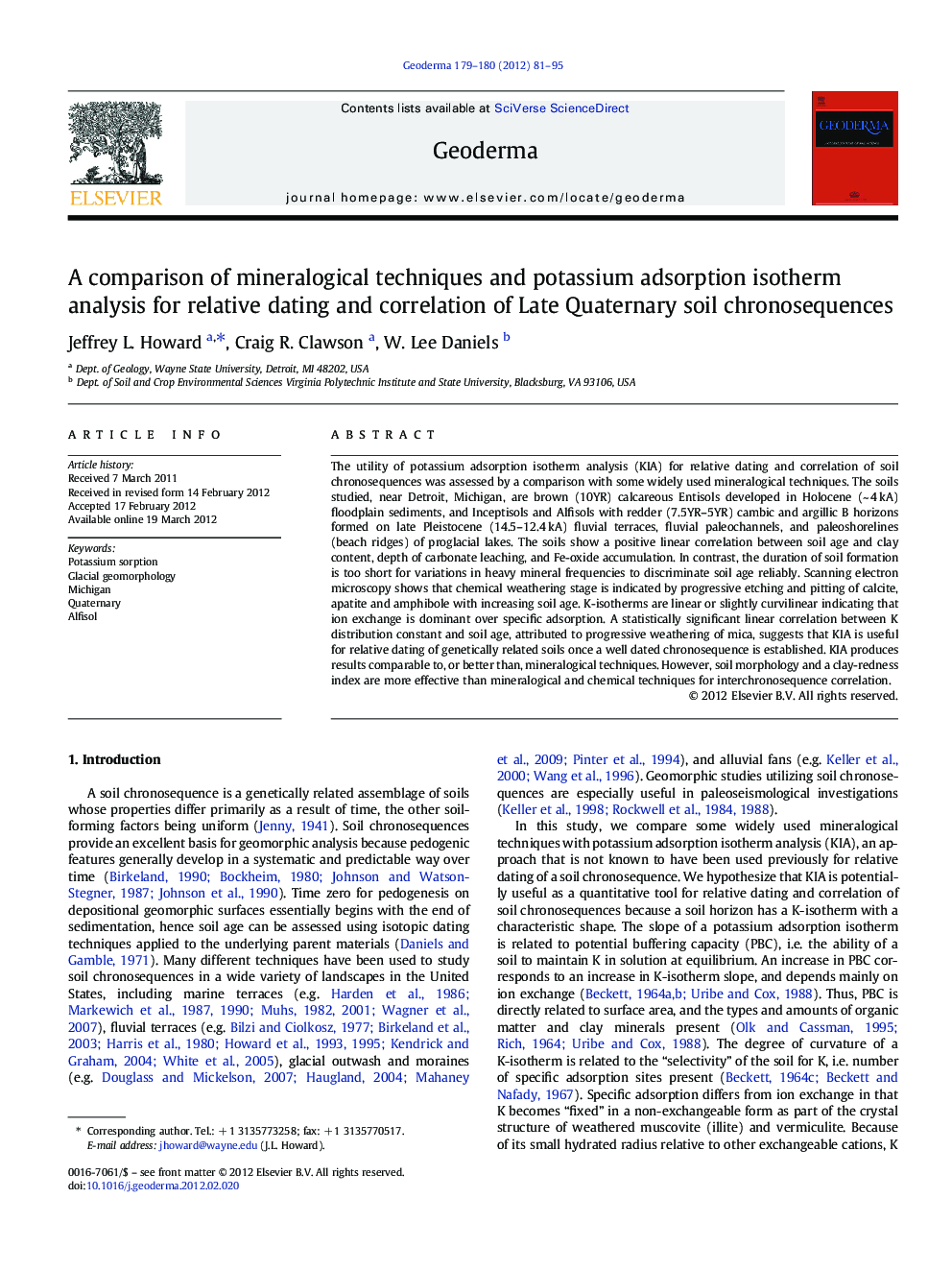| کد مقاله | کد نشریه | سال انتشار | مقاله انگلیسی | نسخه تمام متن |
|---|---|---|---|---|
| 4573859 | 1629498 | 2012 | 15 صفحه PDF | دانلود رایگان |

The utility of potassium adsorption isotherm analysis (KIA) for relative dating and correlation of soil chronosequences was assessed by a comparison with some widely used mineralogical techniques. The soils studied, near Detroit, Michigan, are brown (10YR) calcareous Entisols developed in Holocene (~ 4 kA) floodplain sediments, and Inceptisols and Alfisols with redder (7.5YR–5YR) cambic and argillic B horizons formed on late Pleistocene (14.5–12.4 kA) fluvial terraces, fluvial paleochannels, and paleoshorelines (beach ridges) of proglacial lakes. The soils show a positive linear correlation between soil age and clay content, depth of carbonate leaching, and Fe-oxide accumulation. In contrast, the duration of soil formation is too short for variations in heavy mineral frequencies to discriminate soil age reliably. Scanning electron microscopy shows that chemical weathering stage is indicated by progressive etching and pitting of calcite, apatite and amphibole with increasing soil age. K-isotherms are linear or slightly curvilinear indicating that ion exchange is dominant over specific adsorption. A statistically significant linear correlation between K distribution constant and soil age, attributed to progressive weathering of mica, suggests that KIA is useful for relative dating of genetically related soils once a well dated chronosequence is established. KIA produces results comparable to, or better than, mineralogical techniques. However, soil morphology and a clay-redness index are more effective than mineralogical and chemical techniques for interchronosequence correlation.
► We studied two chronosequences developed in sandy late Pleistocene glacial sediments.
► We compared potassium adsorption isotherm analysis to other commonly used methods.
► Adsorption isotherm analysis is found to be useful for relative dating of soils.
Journal: Geoderma - Volumes 179–180, June 2012, Pages 81–95